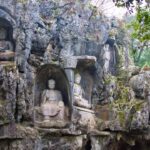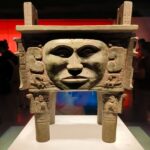
Yuelu Mountain, located in Changsha City, Hunan Province, is one of the 72 peaks of Nanyue Hengshan. In the book “Nanyue Ji,” it is said that “within 800 li around Nanyue, Huiyan is the head, and Yuelu is the foot.” Yuelu Mountain stretches for dozens of kilometers with continuous peaks, exhibiting elegant and lush green colors, like a jade screen lying on the west bank of the Xiang River. People describe it as “a green screen unfolding, as beautiful as polished jade,” and it is known as “the best of Yuelu, surpassing all in Chu and Xiang.”
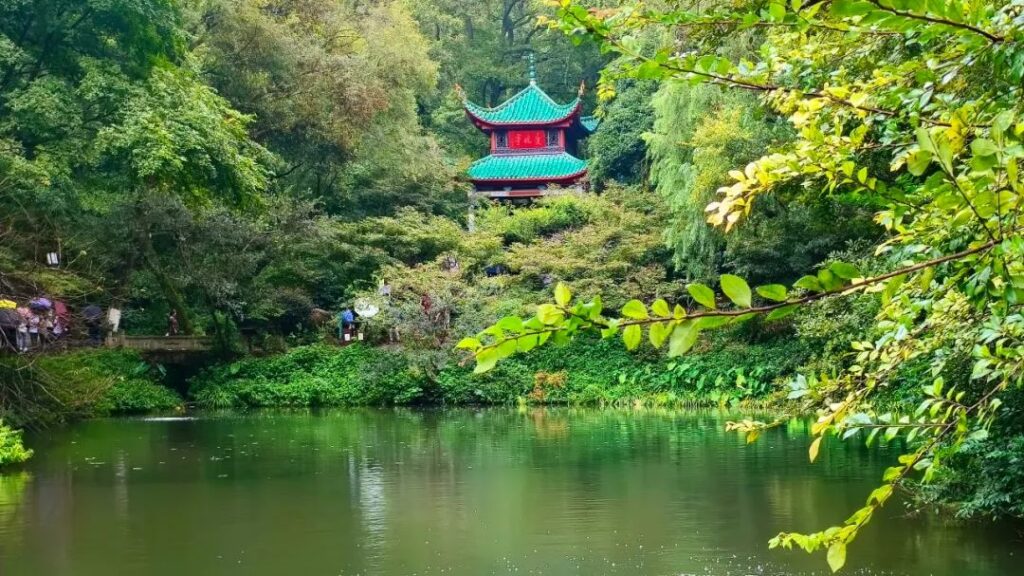
Yuelu Mountain is not high, with an altitude of only 300 meters. It does not possess the majesty of Mount Tai, the steepness of Mount Hua, the beauty of Mount Emei, or the tranquility of Mount Qingcheng. However, this mountain is the root of Hunan culture. Over the centuries, it has left behind numerous historical and cultural relics. Yuelu Academy, Aiwan Pavilion, and Lushan Temple are well-known attractions, making Yuelu Mountain a must-visit destination in Changsha.
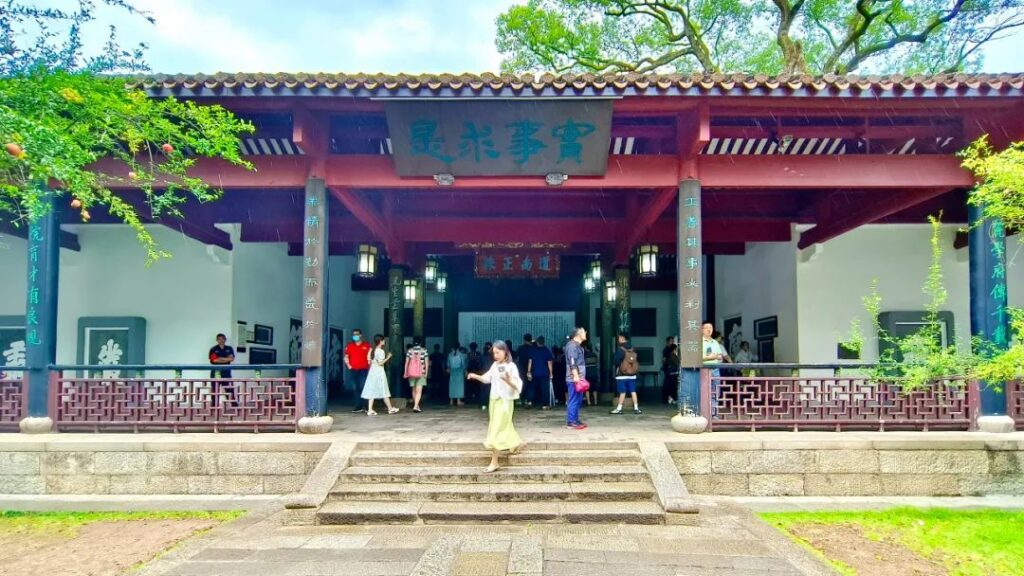
Walking through the drizzling rain, I arrived at the foot of Yuelu Mountain. Entering Yuelu Academy felt like passing through a time portal, immersing in the rich atmosphere of Hunan culture. In the ninth year of the Kaibao era of the Northern Song Dynasty, Zhu Dong, the governor of Tanzhou, established Yuelu Academy here. Since its establishment, the academy has been active throughout the Song, Yuan, Ming, and Qing dynasties, earning the title of “Thousand-Year Institution” from the world.
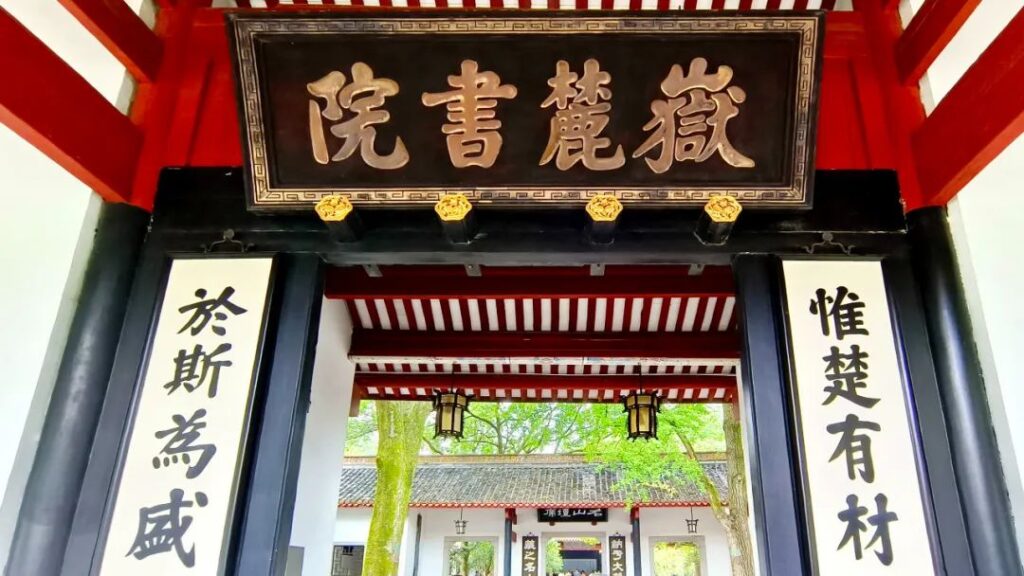
Yuelu Academy is the center of Confucianism in southern China and the predecessor of Hunan University. Along with the White Deer Cave Academy in Lushan, Jiangxi, the Songyang Academy in Dengfeng, Henan, and the Yingtian Academy in Shangqiu, Henan, it is one of the four great academies in ancient China. The couplet “Only Chu has talents, and here they flourish” in front of the academy gate speaks to the strength of this academy in producing talented individuals.
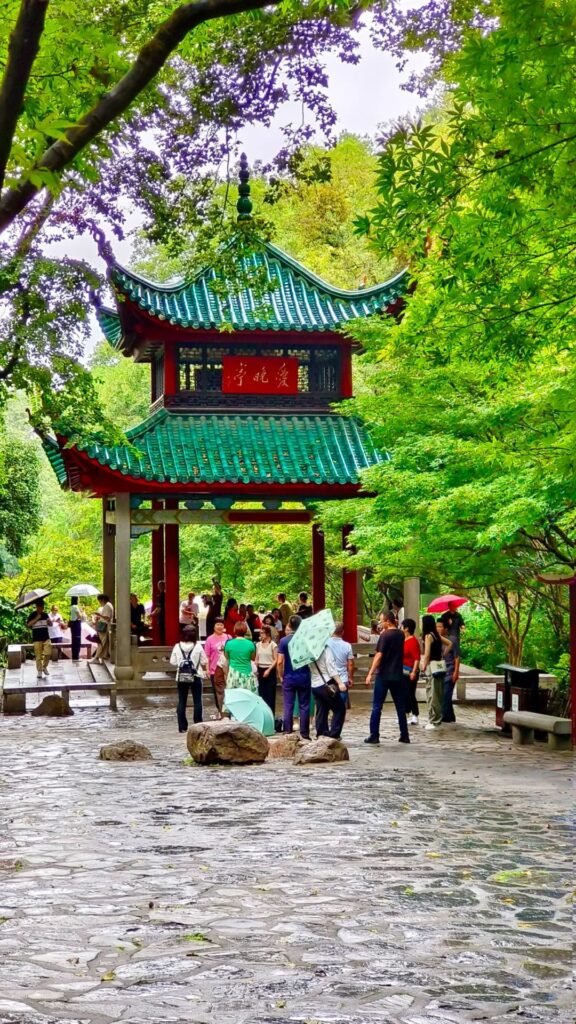
Passing through Yuelu Academy and ascending a few hundred meters, I arrived at Aiwan Pavilion. Aiwan Pavilion was built by Luo Dian, the dean of Yuelu Academy, during the Qianlong period of the Qing Dynasty. Along with the Zuiweng Pavilion in Chuzhou, the Huxin Pavilion in Hangzhou, and the Taoran Pavilion in Beijing, it is known as one of the four famous pavilions in China. Aiwan Pavilion was originally named Hongye Pavilion and was also called Aifeng Pavilion. Later, Bi Yuan, the governor of Huguang, renamed it Aiwan Pavilion based on the poem by Du Mei, “Stopping the carriage to admire the maple forest in the evening, the frosted leaves are redder than the February flowers.”
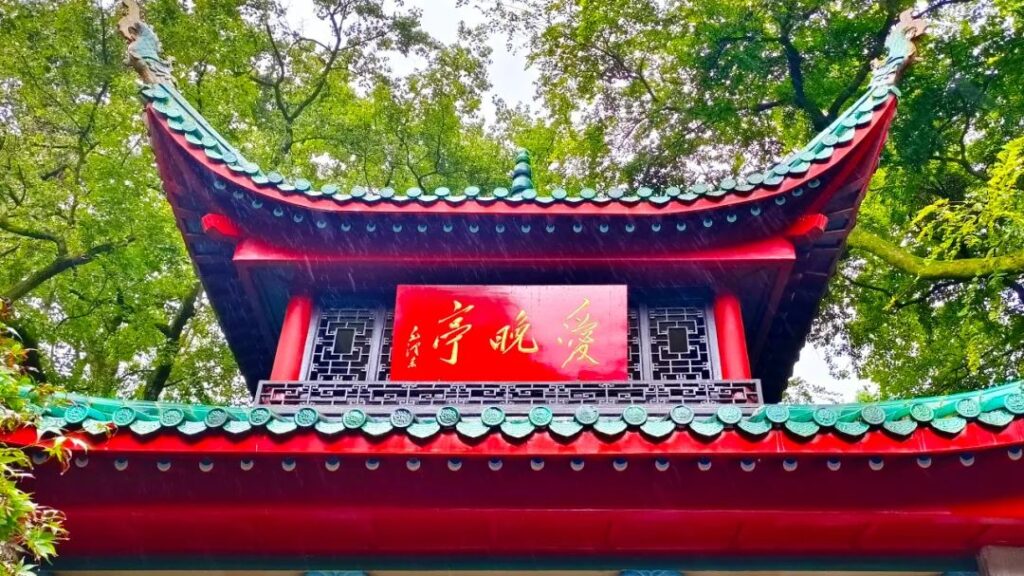
Aiwan Pavilion is located at the entrance of Qingfeng Gorge, surrounded by mountains on three sides. It has a double-eaved roof with eight pillars and glazed green tiles, and the corners of the pavilion are upturned. The four outer pillars are made of granite, while the four inner pillars are round wood with red lacquer. On the east and west sides of the pavilion, there are red-background gold-plated plaques with the inscription “Aiwan Pavilion.” It is said that in 1952, when Aiwan Pavilion was being renovated, Li Da, the president of Hunan University, wrote to Chairman Mao requesting him to write the name of the pavilion, and Chairman Mao gladly accepted the request.

In the past, when Chairman Mao was studying at the First Normal School of Hunan, he often gathered with Luo Xuezan, Zhang Kundi, Cai Hesen, and others under Aiwan Pavilion to discuss current affairs and seek the truth. In the autumn of 1925, 32-year-old Chairman Mao left Shaoshan and went to Guangzhou to lead the Peasant Movement Training Institute. On his way through Changsha, he revisited Orange Island and, filled with emotions, wrote the poem “Qinyuan Chun · Changsha.” This poem, handwritten by Chairman Mao, is engraved in the caisson of Aiwan Pavilion.

Not far from Aiwan Pavilion, in the hexagonal thatched pavilion, there is a stone tablet named “Releasing the Crane.” In the autumn of the third year of the Xuantong era, Cheng Songwan, the education inspector of Hunan, presided over the restoration of Aiwan Pavilion. He had the words “The mountain path is filled with late red, and five hundred peach trees are newly planted; the deep green of the gorge clouds drips, and a pair of tamed cranes await to be caged” written by Luo Dian, the mountain chief of Yuelu Academy, engraved on the pavilion pillars. The details of the restoration of Aiwan Pavilion were also engraved on the stone tablet, along with seven-rhyme poems by Zhang Nanxuan of the Song Dynasty and Qian Nanyuan of the Qing Dynasty about their visits to Yuelu Mountain.
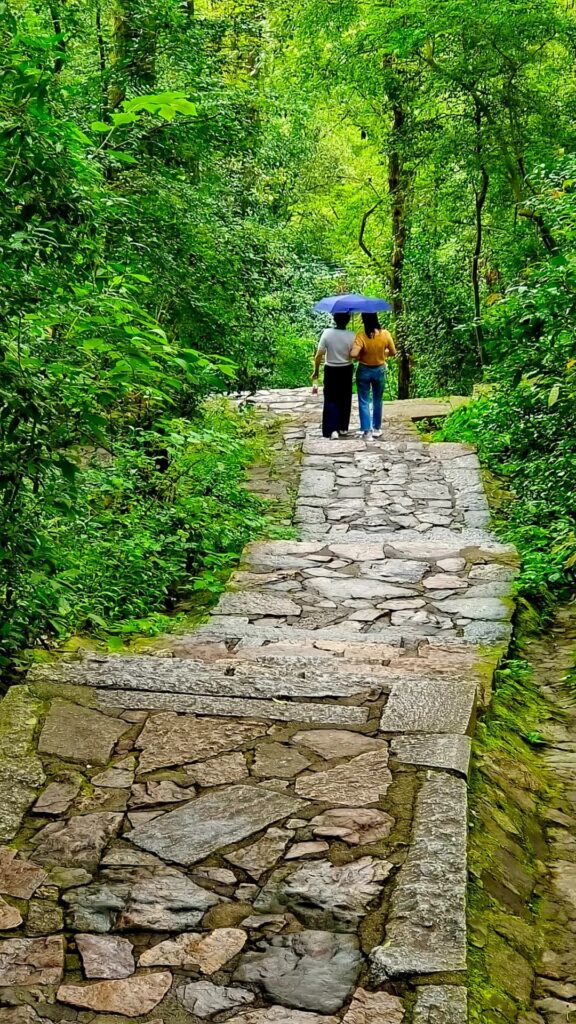
In fact, enjoying the scenery of Yuelu Mountain is indescribably beautiful in any season. In spring, the mountain is lush green, and wildflowers bloom; in summer, the forest is dense, secluded, and cool; in autumn, the maple leaves turn red, dyeing the layers of forests; in winter, the jade trees and icy branches are wrapped in silver. Especially during the scorching summer, this place is a natural summer resort. According to the “Records of Yuelu Academy,” “During the sultry summer, a gentle breeze arrives, and people often rest here, hence the name is aptly given.”
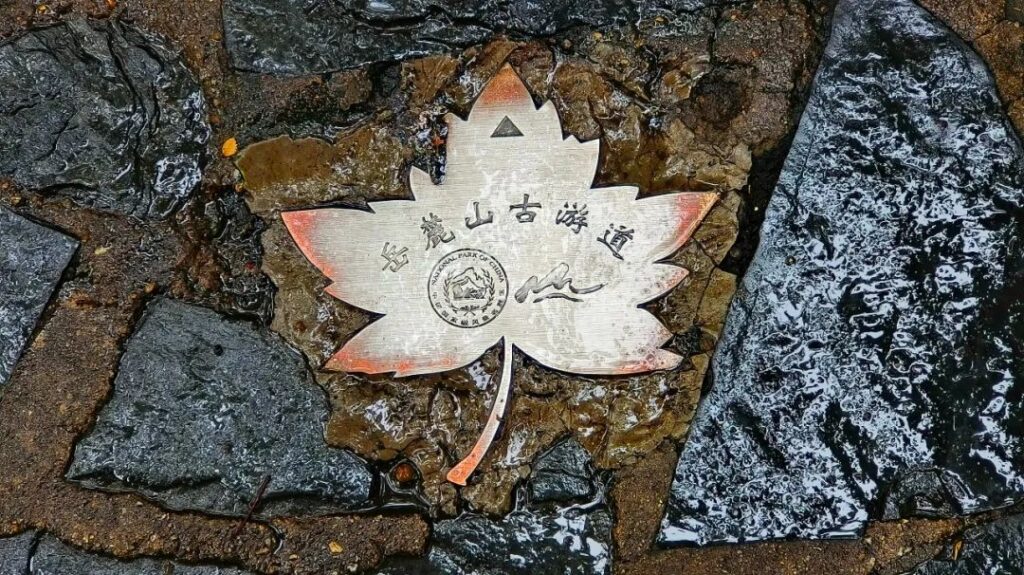
Walking along the ancient trail of Yuelu Mountain, inhaling the fragrance of flowers permeating the valley, and observing the leaves covered with raindrops, I seem to feel the pulse of Yuelu Mountain. The mountains, waters, grass, and trees here are entirely a rhythm of the soul. The brief sunlight after the rain penetrates through the branches, refracting into rays of light and shadow, making the forest more vivid and brilliant, causing people to linger.
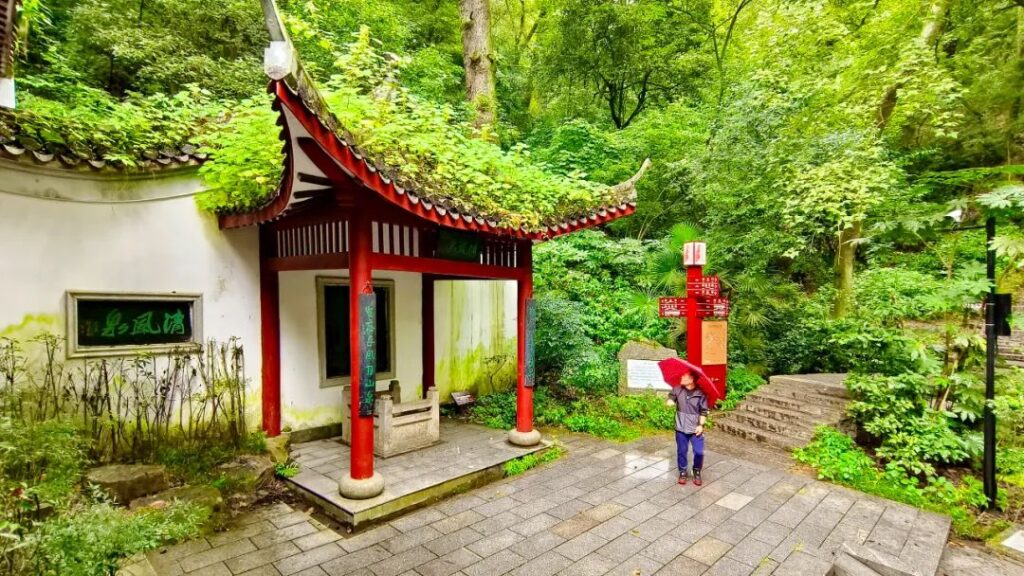
Ascending the mountain along the stone steps in Qingfeng Gorge, the surrounding forest is lush and verdant, and the breeze feels even more refreshing. At the fork in the road, I came across Qingfeng Spring. Qingfeng Spring is a cave resembling an ancient well. The spring water is ice-cold and crystal clear. People collecting the spring water can place their water jars inside the small cave to fill them. It is said that drinking the water from Qingfeng Spring can make one grow younger and younger.
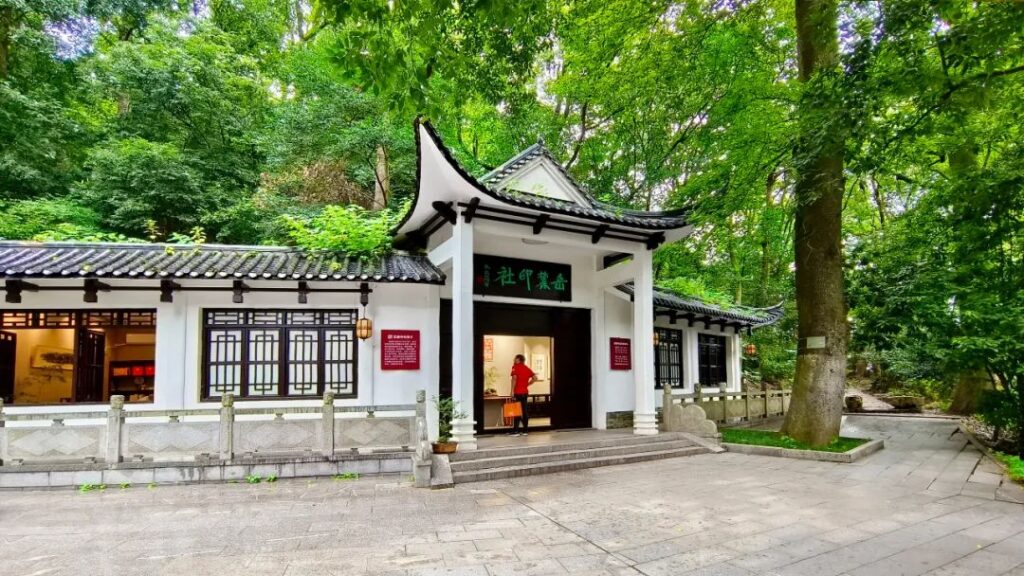
Turning left and heading upward, I reached Yuelu Printing Society. Yuelu Printing Society is an association of literary and art groups affiliated with the Changsha Federation of Literary and Art Circles. It focuses on the study of printing and seal carving, as well as calligraphy and painting. The printing society was established in 2012 and settled in the scenic Yuelu Mountain in March 2023. The presence of Yuelu Printing Society has added a new cultural atmosphere to the picturesque Yuelu Mountain.
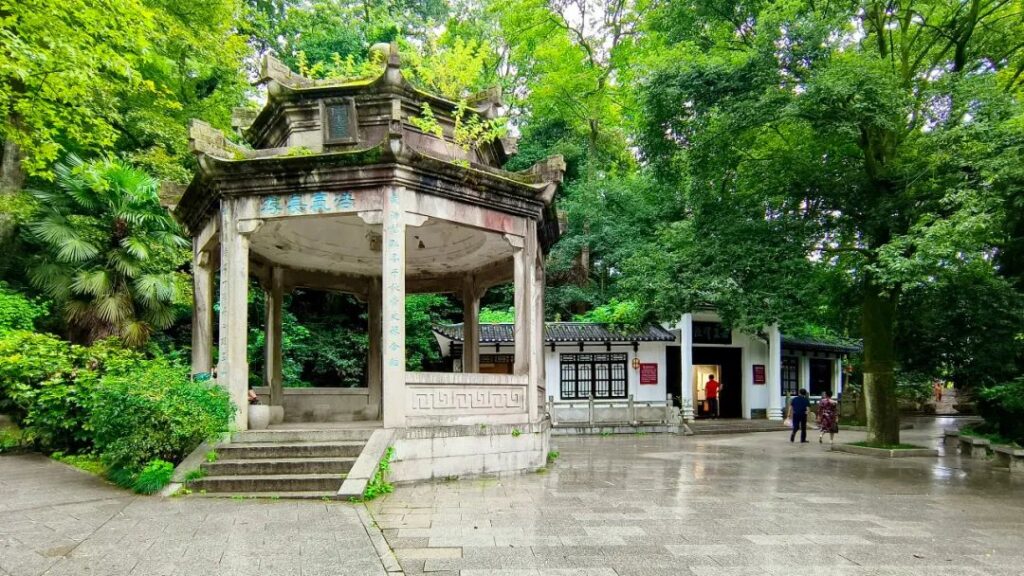
Not far from Yuelu Printing Society is Yangyun Pavilion, also known as the “Martyrs’ Pavilion of the Northern Expedition.” It was built to commemorate the martyrs of the National Revolutionary Army who died in the battle to capture Changsha City. Yangyun Pavilion was constructed in 1931, and the entire pavilion is made of granite. On the front beam of the pavilion, the words “Heroic Spirit Endures Forever” are carved. The couplet on the pillars reads, “Resting with wine in the lonely pavilion, the golden mirror of a thousand autumns reflects the green history; Seeking a piece of stone through the clouds, a dot of vermilion heart illuminates the jade mountain.”
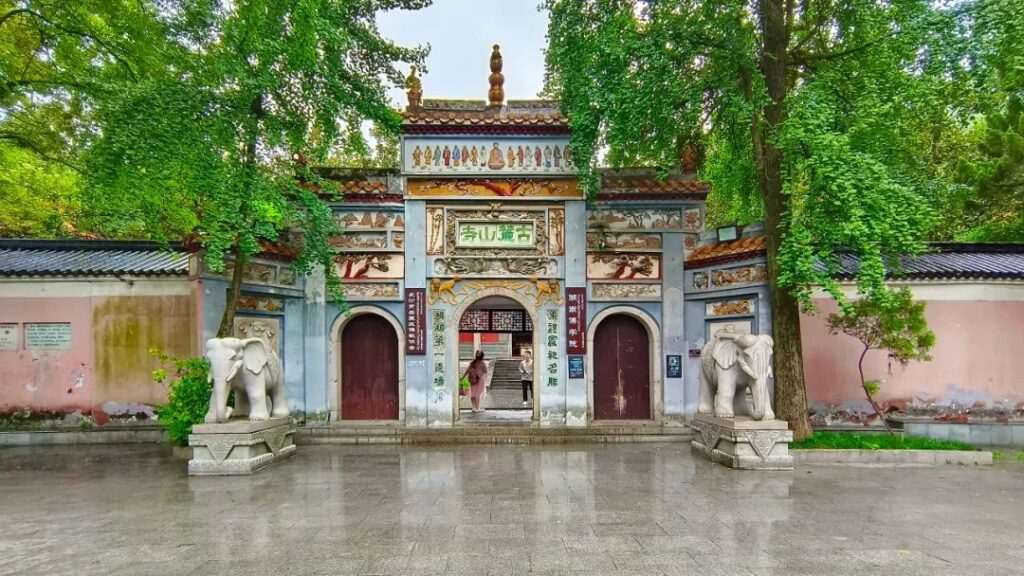
Lushan Temple, also known as “Yuelu Temple,” was first built during the Western Jin Dynasty and is the earliest major Buddhist temple in Hunan. During the reign of Emperor Shenzong of the Ming Dynasty, it was renamed “Wanshou Temple,” and in the early years of the Republic of China, it was renamed back to “Ancient Lushan Temple.” The horizontal inscribed board above the temple’s mountain gate reads “Ancient Lushan Temple,” and the couplet on both sides states, “The most famous scenic spot since the Han and Wei Dynasties, the first Buddhist temple in Hunan.”
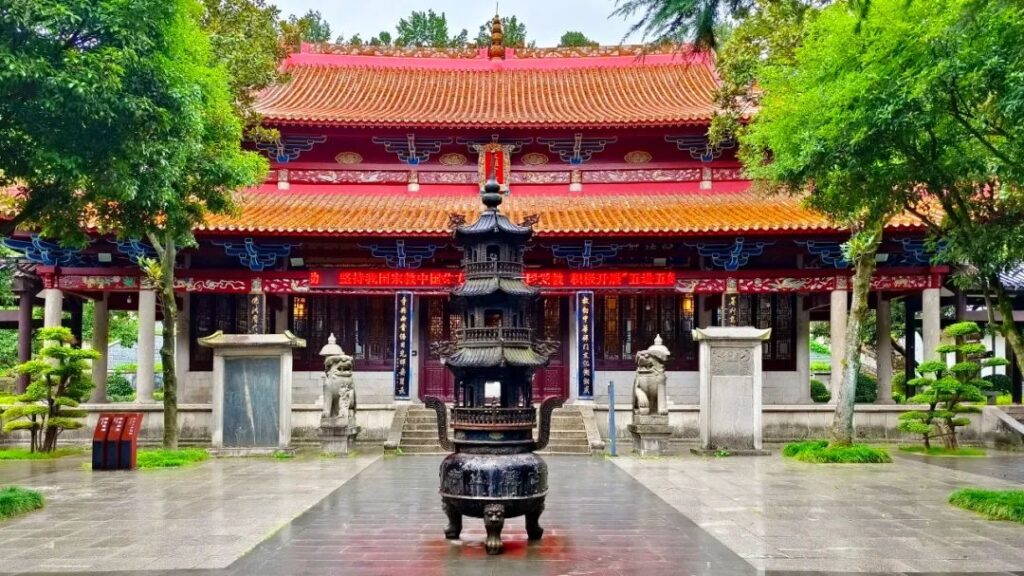
When the Tang Dynasty poet Du Fu was wandering in Changsha, he wrote the verse “The temple gate opens high to the Dongting wilderness, the feet of the hall are inserted into the Red Sand Lake” while visiting Yuelu, praising the grandeur of Lushan Temple. Since its establishment, Lushan Temple has been destroyed by war six times. During the War of Resistance against Japanese Aggression, the temple was bombed by the Japanese army, leaving only the mountain gate and Guanyin Pavilion. In 1986, Lushan Temple was rebuilt.
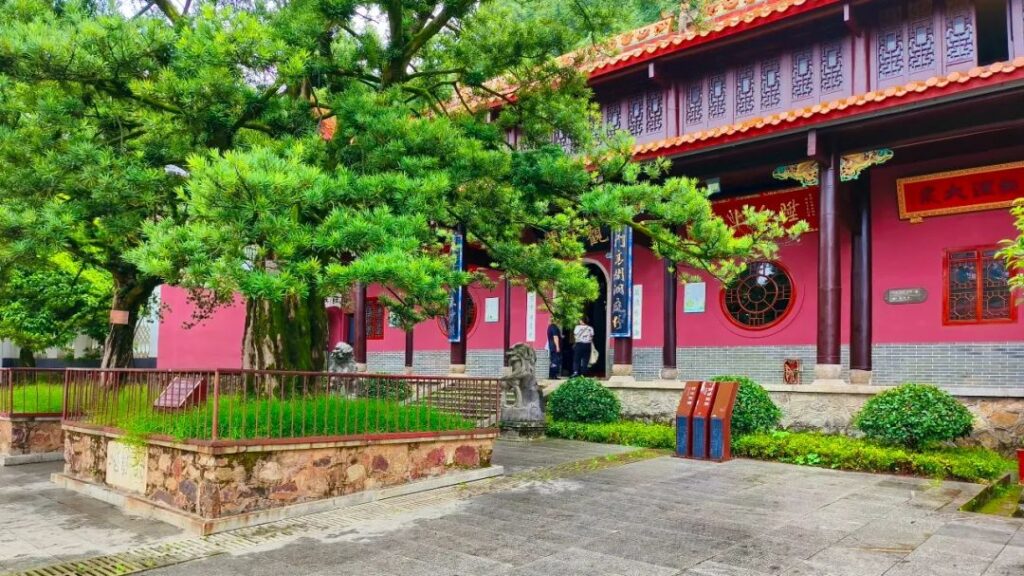
In front of the Guanyin Pavilion at Lushan Temple, two Arhat pines are planted. The two trees stand opposite each other, with their gnarled branches intertwined like a gate, known as the “Pine Gate.” One of the Arhat pines is said to be 1,500 years old and is called the “Six Dynasties Pine.” It is the oldest ancient tree in Changsha City and the oldest surviving ancient Arhat pine in China.
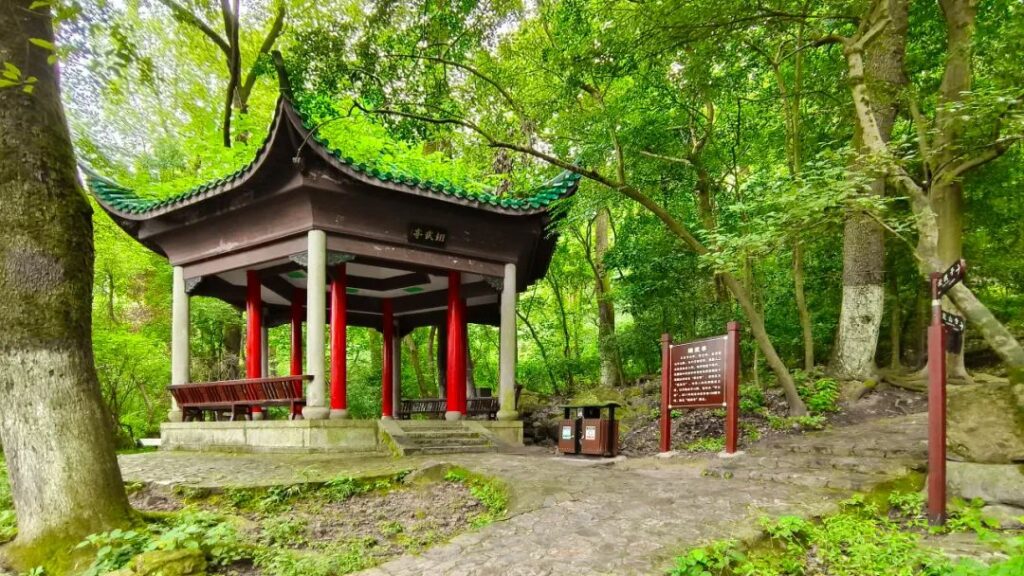
Leaving Lushan Temple, it started raining again in the mountains, so I had to give up climbing and descend along the mountain path on the other side of the temple. Along the way, many tombs of pioneers can be seen, reminding me of Yuan Mei’s verse, “The green mountains are fortunate to bury loyal bones.” On Yuelu Mountain, revolutionary martyrs such as Huang Xing, Cai E, Chen Tianhua, Yao Hongye, Jiang Yiwu, Qin Zhen, and others rest in eternal sleep, along with the soldiers who died in the Battle of Changsha. They have made Yuelu Mountain a mountain of loyalty and righteousness.
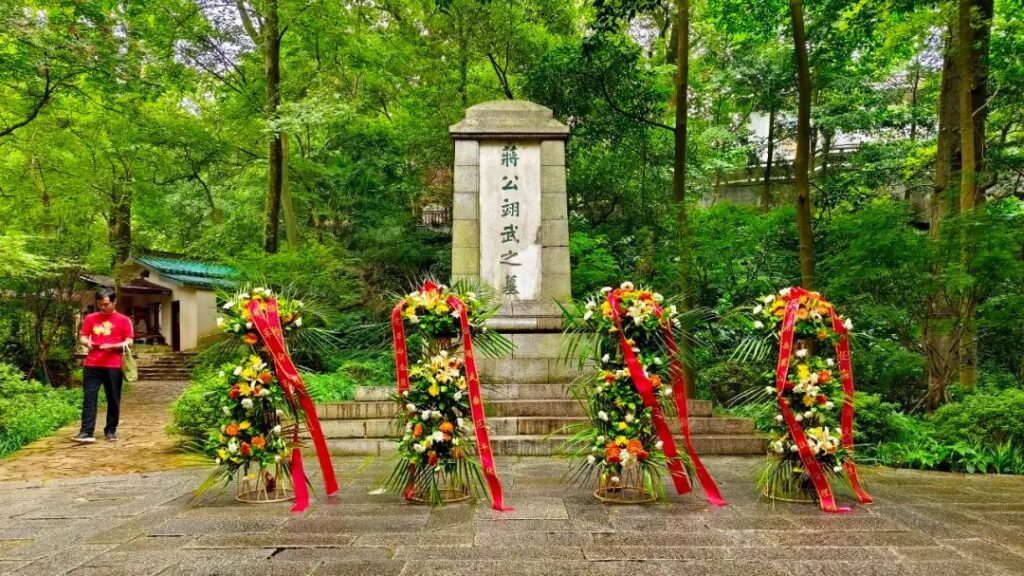
Approximately 20 meters below the main entrance of Lushan Temple is the tomb of Jiang Yiwu. Jiang Yiwu was from Li County, Hunan, and a modern Chinese democratic revolutionary. He joined the Tongmenghui in 1905, organized the Wuchang Uprising in 1911, and served as the Recruitment Commissioner of Hubei and Henan in 1913. He led troops to fight against Yuan Shikai, was arrested in Quanzhou, Guangxi in October, and died in Guilin on the 9th of that month. In 1916, his remains were relocated to Yuelu Mountain.
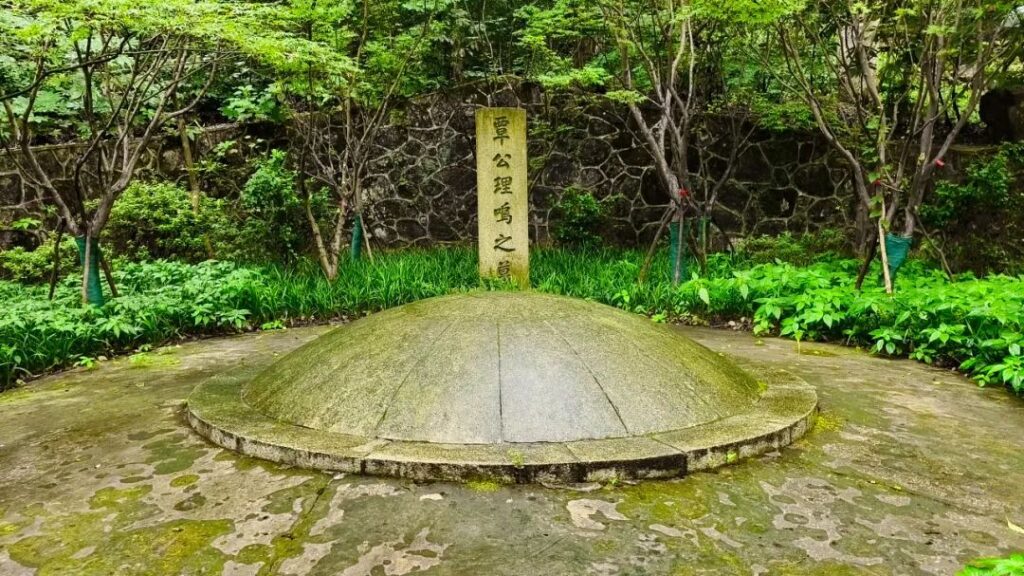
Not far away is the tomb of Qin Zhen. Qin Zhen, styled Liming, was from Taoyuan County, Hunan. He joined the Tongmenghui in 1905. During the “Second Revolution,” he returned to Hunan with Jiang Yiwu to plan the campaign against Yuan Shikai. After the defeat, he fled to Japan. In 1914, he joined the Revolutionary Party and returned to China to launch the Hunan Independence Movement. In 1924, he supported Sun Yat-sen’s reorganization of the Kuomintang. After the outbreak of the War of Resistance against Japanese Aggression, he actively advocated resistance against Japan and opposed Chiang Kai-shek’s initiation of the civil war. He died of illness in 1947 and was buried on Yuelu Mountain.
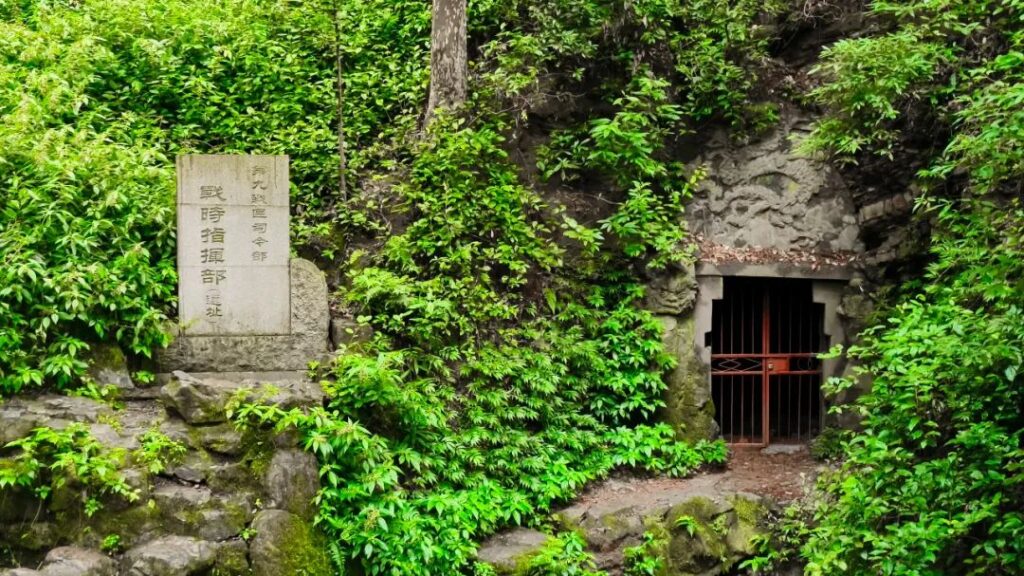
The former site of the wartime headquarters of the Ninth War Zone Command is located in a cave in Qingfeng Gorge. During the War of Resistance against Japanese Aggression, the Chinese army and the invading Japanese army engaged in three battles in the Changsha area. At that time, the Ninth War Zone Command was stationed on Yuelu Mountain. After fierce fighting, the Chinese army achieved victory in all three battles to defend Changsha.
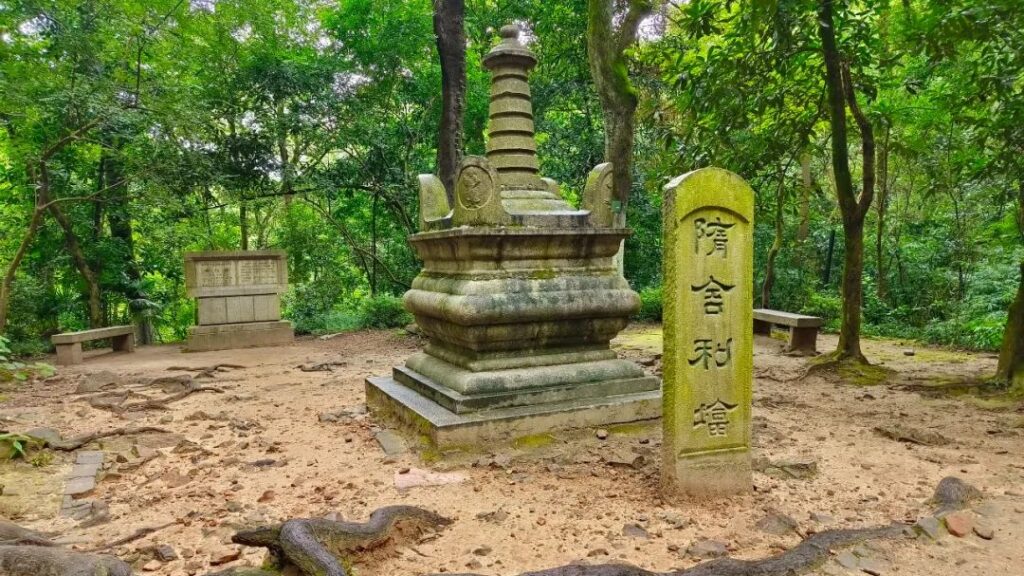
In the tranquil mountain forest, there is a pagoda-style building that closely resembles a monk’s hat. This is the “Sui Dynasty Sarira Pagoda.” The pagoda is entirely built with granite and consists of three levels. The bottom is a sumeru-style pagoda base, the middle four corners are shaped like banana leaves and carved with images of strong men, and the top is a monk’s hat treasure summit. On the front of the stone tablet in front of the pagoda, “Sui Dynasty Sarira Pagoda” is engraved in clerical script, and on the back, “Jointly Building Bodhi” is inscribed.

Although I was unable to fully enjoy the tour of Yuelu Mountain due to the rain and had some regrets, the close proximity allowed me to gain a new understanding of Yuelu Mountain. It is like fine wine and delicacies, leaving an endless aftertaste with a slight taste, while deep intoxication makes one unaware of its origin. The tour of Yuelu Mountain is truly a shallow journey through the mountains and waters, but a spiritual journey through culture. Beneath the beautiful scenery of mountains and waters, there is the distant historical and cultural backdrop, and the artistic conception within is beyond my ability to fully describe.
